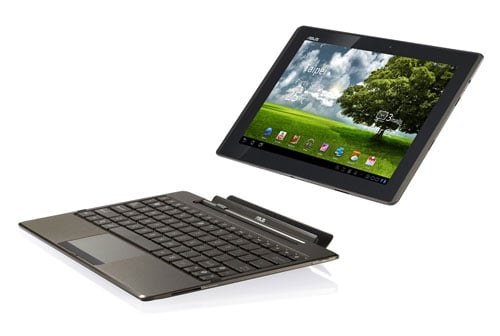Asus Eee Pad Transformer Review
Half-baked. That would describe the large majority of Android-based tablets we've seen come through our test labs here at HotHardware thus far. Even Motorola's Xoom, though infused with Google's latest Android 3.0 (Honeycomb) release, felt like it could use a bit of polish in spots, though most of the refinement wouldn't need to come from the device so much as its operating system. If you were wondering why Google was restricting the Marketplace on any device larger than 7 inches, the reason is simply that 2.X versions of Android were engineered with handsets in mind, not tablets, netbooks or larger devices. And though Honeycomb has made great strides in an effort to enabling Android for larger devices, the Android tablet scene thus far still has a ways to go with respect to catching the kind of polish and refinement that Apple is enjoying with the iPad.
That said, certain manufacturers like Motorola, ViewSonic, Toshiba, Acer and of course Asus are leading the charge now that Honeycomb is out in the wild. A maturation process is taking place as we're writing this and Asus seems keen to get things done "right" sooner rather than later. A lot of the competition was either pre-announcing very early systems or releasing cobbled together Android 2.2-driven devices while Asus was quietly refining their product, waiting for Honeycomb's go-ahead. Today we've got a look at what is essentially the first real Android tablet to hit the market from Asus and it's also safe to say, at this early juncture, that it's also one of the most refined, well-planned Andorid tablets to hit the market yet.
The Asus Eee Pad Transformer tablet is a more complete Android-based tablet PC with a companion docking station that affords it the ability to act as an Android 3.0 Honeycomb-based netbook as well. It's based on NVIDIA's powerful dual core 1GHz Tegra 2 processor with 1GB of RAM and 16 - 32GB of internal storage. If you were waiting for Android tablets to get "real," today might be a good day to finally take the plunge. Here's a detailed look at the Asus Eee Pad Transformer tablet PC and Netbook convertible.
|
| Display: 10.1" LED Backlight WXGA (1280x800) LCD 10 finger multi-touch support Scratch resistant glass CPU: NVIDIA® Tegra™ 2 Memory: 1GB Storage: 16GB/32GB Unlimited ASUS Webstorage (trial, one year) Wireless Data Network: WLAN 802.11 b/g/n@2.4GHz Bluetooth V2.1+EDR Camera: 1.2MP Pixel Front Camera, 5MP Pixel Rear Camera Audio: SRS Premium Sound Stereo Speakers, High Quality Mic Interfaces: 1 x 2-in-1 Audio Jack (Headphone/Mic-in) 1 x mini HDMI 1.3a 1 x Card Reader (Micro SD) |
Sensors: G-Sensor Light Sensor Gyroscope E-Compass GPS Multi-Task Support : Yes Flash Support : Yes Software : - ASUS Launcher - MyLibrary - MyNet - MyCloud*4 - File manager - PC Sync Battery: 9.5 hours; 24.4Wh Li-Polymer Battery *5 16 hours with dock *5 Dimensions: 271 x 171 x 12.98 mm Weight: 680g/1.499lbs. Mobile Docking Keyboard : Touch Pad 2 x USB 2.0 2 x Docking port (Host + Client) 1 x Card Reader (MMC/SD/SDHC) 1 x 24.4Wh Battery |
The Transformer has dual front and rear facing cameras (1.2MP and 5MP, respectively), 1GB of on board memory, mini-HDMI output, a microSD card slot and a head phone/mic combo jack. Drop it into its $150 keyboard dock and you pick up a full-sized flash card reader slot, a pair of USB ports and, of course, keyboard and trackpad functionality. It's a total ultra-portable computing solution as a result, which makes the Transformer unique versus other Honeycomb-based tablets currently.
The 32GB version of the Asus Transformer is priced at $499, while the 16GB version has a $399 MSRP. Comparatively, Motorola's Xoom is available in a WiFi-only version with 32GB of storage for $599 currently. This puts the new Asus Honeycomb slate at a $100 cost advantage over Motorola's, with nearly identical platform specs (Tegra 2 and 1G of system memory). However, beyond its price advantage there is obvious design differentiation as well. We'll take a look at that in more detail, next.







